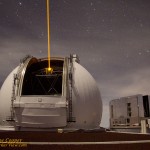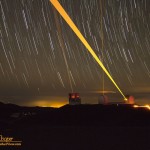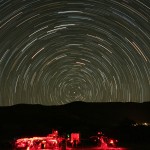Beaches? Tropical gardens? The volcano? Yeah, BTDT, not what I came to Hawaiʻi for. Visiting Mauna Kea is at the top of the list for some folks who visit our island, a priority I can fully understand. Even better? Bring a camera to this spectacular mountain. After six years of working on Mauna Kea I still carry a camera and find new shots. Some of the most fascinating photographic opportunities occur after the Sun has set. For those who pursue shots in the dark, long exposure photography, the summit provides a setting that is worth the effort to shoot.

So what are the real rules for summit access after dark?
I recently had a good conversation with Stuart Hunter, the head of Mauna Kea Support Services, on this issue. From what I took away, MKSS and the rangers are hardening the line on staying after dark. Official policy has been that you can stay on the summit after dark, but are strongly advised not to stay for safety reasons. What Stuart indicated is that the level of encouragement to head down to lower elevation after dark is being “enhanced”.
There are good reasons for this. While the summit appears to be a friendly place, it can turn dangerous all too quickly. The altitude, the weather, a vehicle breakdown? Some unanticipated occurrence can become a real problem. During the day there is help. After dark? Not so much. The last patrol by the rangers, and your last chance to get help if you are experiencing difficulty, is just after sunset. You MUST take the summit seriously. We have regular incidents and the occasional fatality to press home that lesson.

Conditions on the summit can also be quite challenging at night. It is cold, with temperatures hovering around freezing in the summer, with much colder conditions during the winter. I have experienced temperatures as low as 17°F (-8°C) on the summit, nowhere near the record.
The wind is even worse, transforming an otherwise pleasant night into misery. Gusting winds of 10-30mph are common, with hurricane force winds of over 70mph something that happens once or twice a year. Holding the tripod down, a heavy tripod with the legs set as short and wide as possible, hoping that the shaking is not enough to destroy the exposures, not exactly conditions favoring long exposure photography. I have had several time lapse sequences ruined by gusting wind despite a well placed heavy tripod.

If you are obliged to leave the summit it is not the end of your photographic aspirations. There are great opportunities for star trail shots from lower elevations. A couple suggestions… Across from the VIS is a short trail leading to the top of Puʻu Kalepeamoa, the view is spectacular with three major volcanoes to be seen under the stars. Perhaps from down in the saddle looking back at the mountain? There is a short trail up Pu’u Huluhulu at the Saddle Road / Mauna Kea junction that offers a great vantage point for a star-trail shot.

